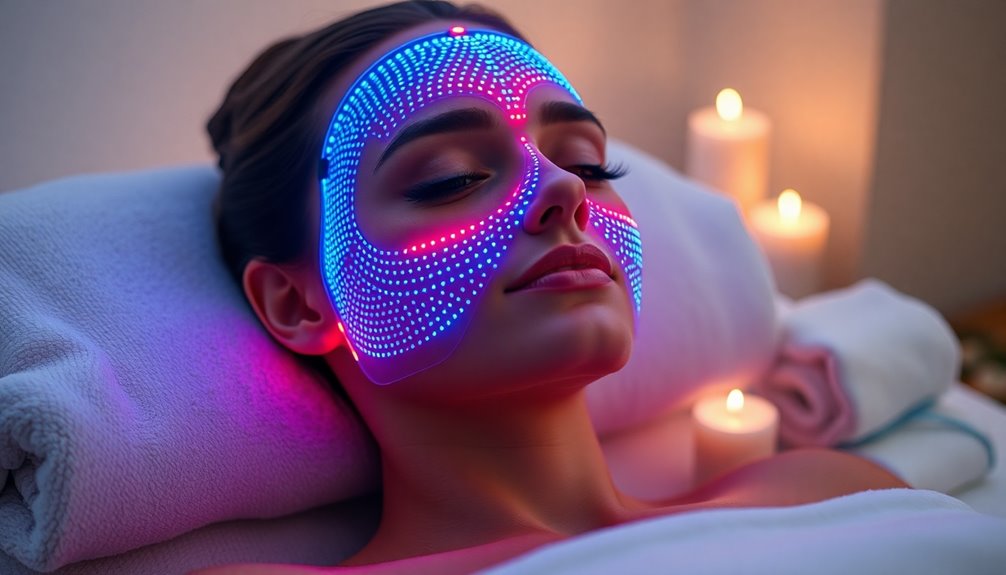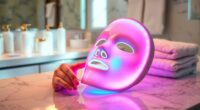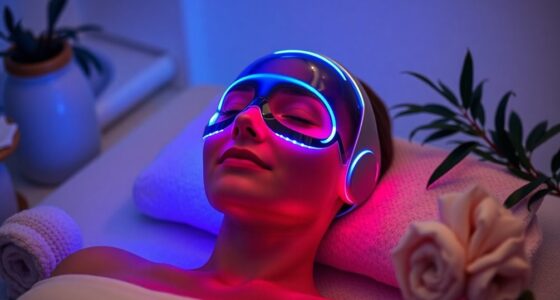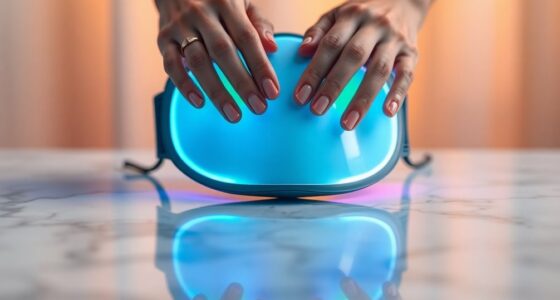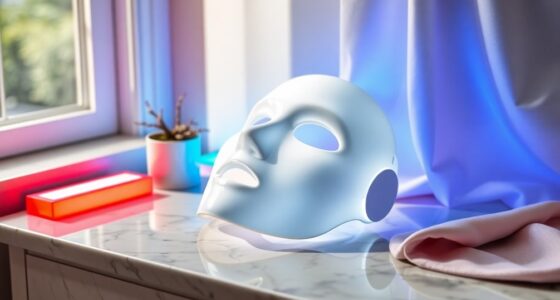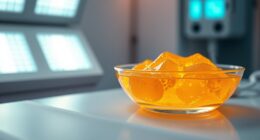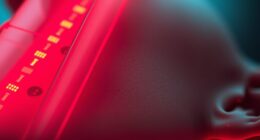Yes, LED face masks can work wonders for your skin! They use specific wavelengths of light to stimulate collagen production, reduce inflammation, and combat acne. Many users report improved skin texture and reduced wrinkles with consistent use. However, the effectiveness can vary based on device quality and individual skin conditions. Safety is essential, so always follow manufacturer guidelines. Want to know more about how to maximize their benefits and compare them with professional treatments? Keep going!
Key Takeaways
- LED face masks can improve skin texture, reduce wrinkles, and enhance elasticity with consistent use of 3 to 5 times a week.
- Red light boosts collagen production, while blue light targets acne-causing bacteria, aiding in overall skin healing.
- At-home LED masks may be less powerful than professional treatments, but FDA-cleared devices ensure safety and effectiveness.
- Individual results vary based on device quality, frequency of use, and skin type, so effectiveness may differ among users.
- Eye protection during treatments is essential, especially with blue light, to minimize risks like inflammation or redness.
What Are LED Face Masks?
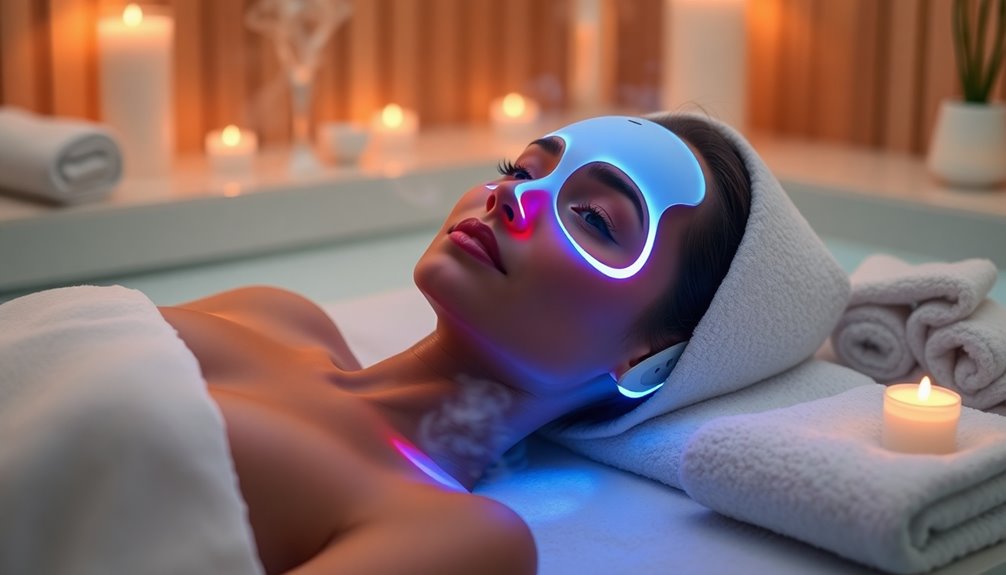
LED face masks are innovative devices designed to tackle various skin concerns using specific wavelengths of light. These light-emitting diode masks target skin issues like acne and signs of aging through at-home treatments.
They feature eye and mouth holes and secure comfortably with straps, making them easy to use. By promoting biochemical reactions in your skin cells, these masks increase collagen synthesis without causing heat damage, offering a non-invasive solution.
While prices vary from under $50 to nearly $2,000, the technology and effectiveness differ markedly. Although studies indicate subtle improvements in skin texture and wrinkle reduction with regular use, at-home versions are generally less powerful than FDA-approved options available in professional dermatological settings.
How Does LED Light Therapy Work?
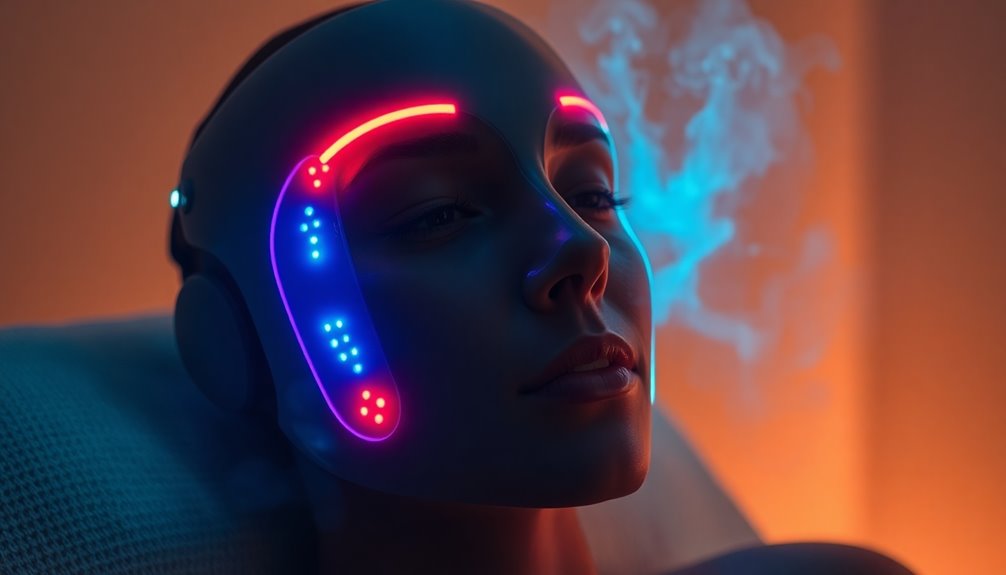
LED light therapy works by using specific wavelengths of light that penetrate your skin, triggering various cellular processes.
Each color of light has distinct effects; for instance, red light boosts collagen while blue light fights acne.
To see real results, you’ll need to use these treatments consistently, as their benefits accumulate over time.
Mechanism of Action
When you use light therapy, specific wavelengths penetrate your skin, boosting cellular activity and enhancing collagen production.
Red light LED, in particular, operates within the 630-700 nanometer range, helping to reduce inflammation while stimulating collagen growth. This process improves skin elasticity and texture, making it smoother and more youthful.
Additionally, LED light therapy promotes increased blood circulation, which aids in nutrient delivery and accelerates your skin’s healing process.
To see results, regular use is essential, as visible improvements often accumulate over time rather than appearing after just one session.
While at-home versions of these devices are available, they typically emit lower energy levels than professional treatments, which are more powerful and extensively studied for their effectiveness.
Wavelengths and Effects
Light therapy harnesses specific wavelengths to trigger various skin benefits, each color serving a unique purpose. Here’s a quick breakdown of how different wavelengths affect your skin:
| Light Color | Benefits |
|---|---|
| Blue Light | Targets acne-causing bacteria |
| Red Light | Boosts collagen production and reduces inflammation |
| Near-Infrared Light | Promotes healing in deeper skin layers |
| 630-700 nanometers | Enhances skin elasticity and texture |
| 700 nanometers+ | Reduces chronic inflammation |
Treatment Frequency Importance
To achieve the full benefits of light therapy, understanding treatment frequency is key. For visible improvements, you’ll want to commit to consistent use of your at-home LED mask, aiming for 3 to 5 sessions per week over several weeks.
This frequency is essential for stimulating cellular activity and enhancing collagen production, as the therapy’s effects are cumulative.
Keep in mind that at-home LED masks typically require longer sessions due to their lower energy levels compared to in-office treatments.
To maximize results, verify your skin is clean and dry before each session. Regular use can also complement professional treatments, extending their benefits and reducing the need for frequent visits, while remembering that these masks are generally safe for use.
Benefits of LED Face Masks
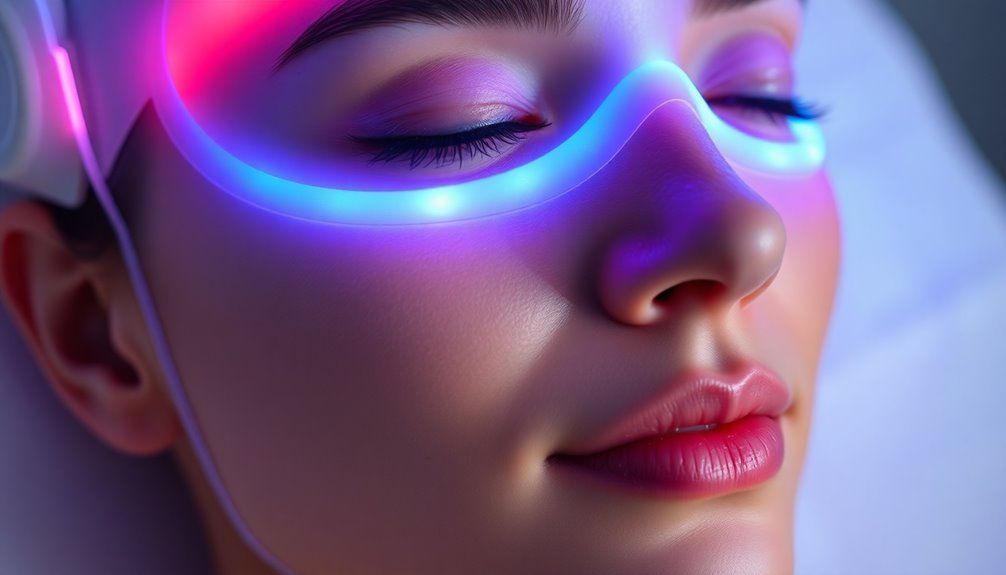
LED face masks offer impressive skin rejuvenation effects that can help you achieve a more youthful appearance.
They can also target acne, reducing breakouts and promoting clearer skin.
Plus, with regular use, these masks boost collagen production, enhancing your skin’s elasticity and texture.
Skin Rejuvenation Effects
While many skincare treatments promise youthful skin, LED face masks, especially those utilizing red light therapy, stand out for their impressive rejuvenation effects.
By stimulating collagen production, these masks help reduce wrinkles and enhance skin elasticity. With regular use, red light therapy decreases inflammation and promotes healing, contributing to a more youthful appearance over time.
You’ll notice subtle improvements in skin texture and tone after consistent sessions. The red light wavelengths, typically between 630 to 700 nanometers, penetrate deeply into the skin, making them effective for anti-aging benefits.
Plus, near-infrared light reaches even deeper layers, aiding in wound healing and skin recovery. Embracing LED masks can be a game-changer for your skin rejuvenation journey.
Acne Treatment Benefits
How can a simple face mask transform your acne treatment routine? By incorporating LED therapy into your regimen, you can target acne-causing bacteria effectively. Blue light LED not only helps reduce acne lesions but also prevents future breakouts. Clinical studies show improvement rates of up to 70% with consistent use.
| Benefit | Description | Frequency |
|---|---|---|
| Reduced Acne Lesions | Targets bacteria, minimizing breakouts | 3-5 times per week |
| Soothing Inflammation | Red light calms irritated skin | 3-5 times per week |
| Improved Skin Texture | Promotes collagen production | Regular use |
| Post-Acne Scar Reduction | Aids in healing and regeneration of skin | Regular use |
Regular use can lead to noticeable improvements!
Collagen Boosting Properties
When it comes to enhancing your skincare routine, the collagen-boosting properties of LED face masks can make a significant difference.
These masks, especially those using red light therapy, emit wavelengths that stimulate collagen production deep within your skin. This process is essential for maintaining skin elasticity and reducing fine lines and wrinkles.
Regular use can lead to noticeable improvements in skin texture and firmness, giving you a more youthful appearance. Studies show that consistent sessions—about 3 to 5 times a week—can accelerate skin healing and reduce inflammation, further supporting collagen production.
Do LED Face Masks Really Work?
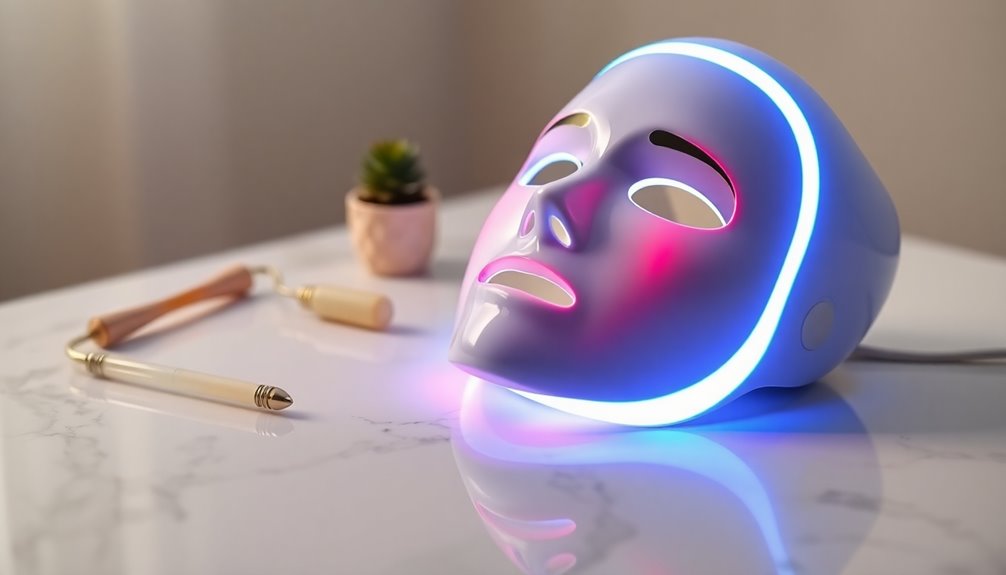
Are you curious about whether LED face masks truly deliver results? Research indicates that LED face masks really can improve skin texture and reduce wrinkles, especially with consistent use.
However, their effectiveness varies based on several factors:
- The quality of the device
- The frequency of use
- Individual skin conditions
- Following the manufacturers’ guidelines
While clinical studies show benefits from LED therapy, long-term efficacy isn’t fully established.
LED masks promote the production of collagen and can be safe for most people when properly used.
Keep in mind that at-home devices may not be as powerful as professional options. For the best results, always choose FDA-cleared masks that utilize visible light for safety and effectiveness.
Safety and Risks of LED Face Masks
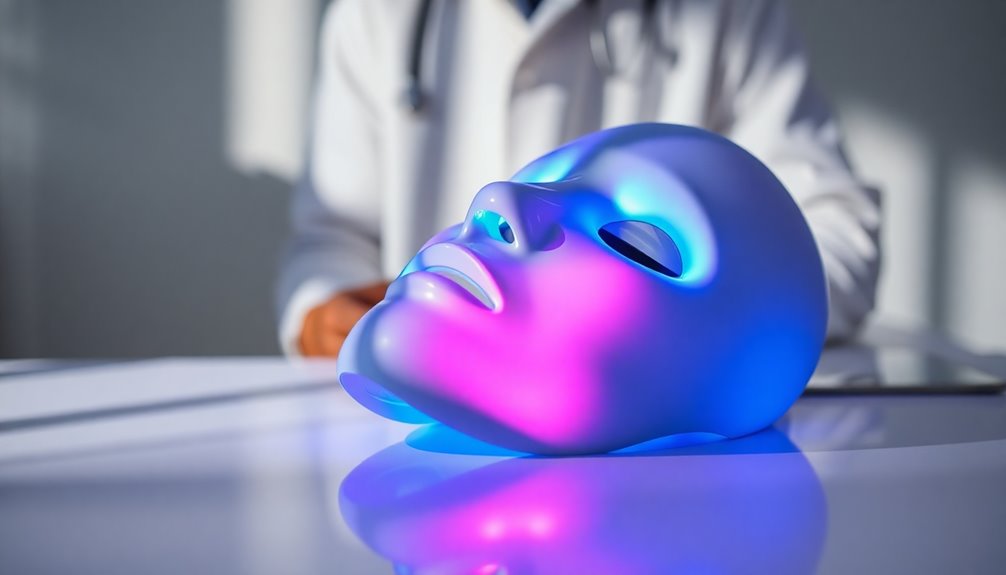
While LED face masks offer promising benefits for skin improvement, it’s important to evaluate their safety and potential risks. Most users find these devices safe, but if you have light sensitivity, consult a dermatologist first. Moreover, users should ensure they follow the manufacturer’s guidelines and limit exposure time to avoid any adverse effects. It’s also crucial to note that individual results may vary, leading many to wonder, ‘do LED light masks deliver results? ‘ Ultimately, while these masks can enhance skin appearance for some, it’s essential to approach their use with careful consideration and professional advice.
Eye protection is vital during treatments, especially with blue light, to avoid damage from spillover exposure. Be aware of possible side effects like increased inflammation, rashes, redness, and pain, particularly if you overuse or misapply the mask.
Long-term safety data on at-home devices is limited, so always follow the manufacturer instructions to minimize risks. Additionally, if you have darker skin tones, you might face a higher risk of discoloration, making caution and further research essential before use.
At-Home Masks vs. Professional Treatments
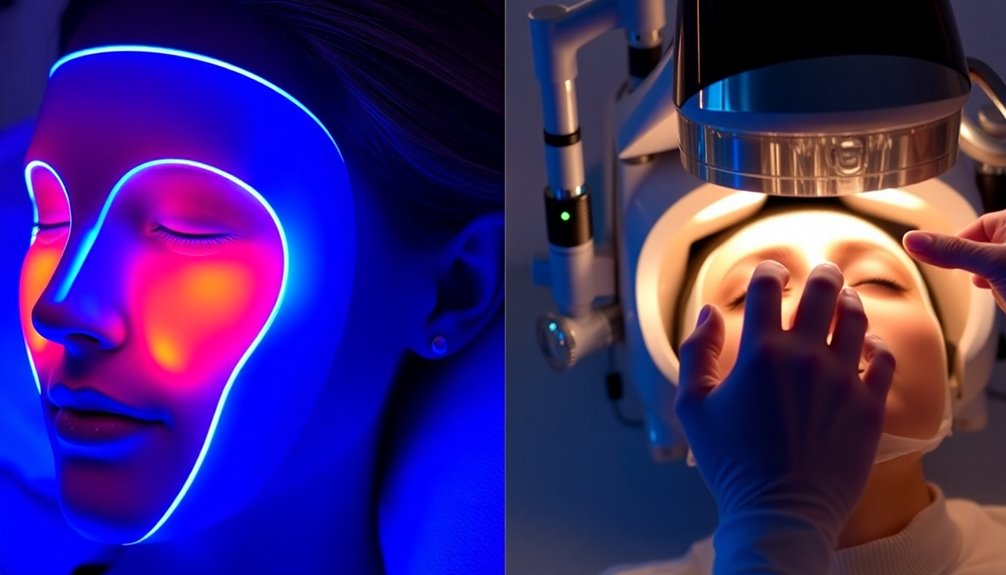
Although both at-home LED masks and professional treatments aim to improve skin health, they differ markedly in effectiveness and application.
At-home devices generally emit lower energy levels, requiring consistent use—around 3 to 5 times a week—to see visible improvements. In contrast, professional treatments, found in dermatologists’ offices, often yield faster and more noticeable results due to their higher intensity and clinical backing.
- At-home masks provide uniform treatment across the face.
- Professional devices target specific areas with precision.
- Consistent use of at-home masks can complement professional treatments.
- Both options can help minimize wrinkles, but professional treatments deliver quicker effects.
Ultimately, combining both methods may enhance your skincare routine.
Tips for Using LED Face Masks Effectively
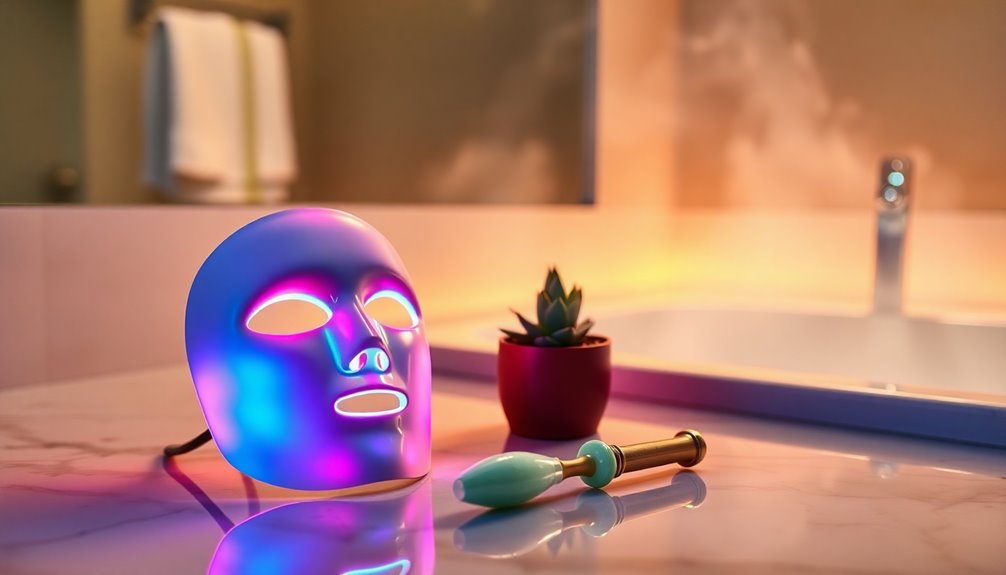
To get the most out of your LED face mask, consistency is key. Aim to use the mask 3 to 5 times a week for about 20 minutes each session. This allows the light therapy to build up its effects over time.
Always start with clean, dry skin to maximize light absorption, and consider applying a moisturizer afterward to prevent dryness. Confirm you’re using an FDA-cleared device to guarantee safety and effectiveness, and carefully follow the manufacturer’s instructions regarding usage time and frequency.
Position the mask closely against your skin to enhance energy absorption, as at-home devices often operate at lower energy levels. Keep an eye on your skin’s response, and consult a dermatologist if irritation arises.
Is It Worth Investing in an LED Face Mask?
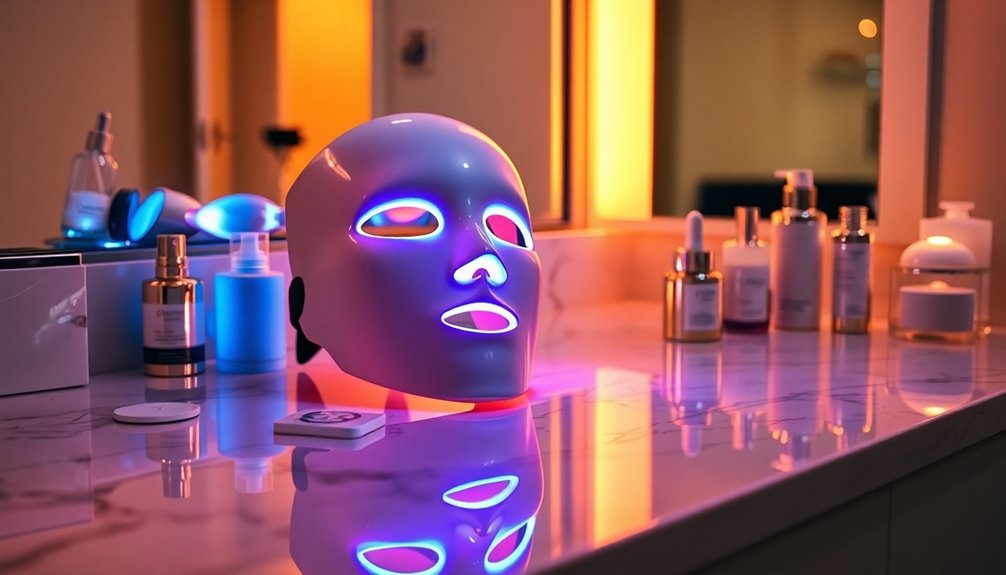
Is investing in an LED face mask really worth it? The cost of LED masks can range from under $50 to nearly $2,000, making this a significant investment.
While research shows that these masks can improve skin texture and wrinkles, at-home versions often fall short compared to professional treatments.
Here are some factors to evaluate before you decide:
- Effectiveness: Results vary based on device quality and skin type.
- Safety: Confirm you choose FDA-cleared devices for safe use.
- Wavelengths: Different wavelengths target various skin concerns.
- Frequency: Regular use is essential to see benefits.
In the short term, you might find LED masks safe, but weigh the potential benefits against the cost before committing.
Frequently Asked Questions
Does the LED Face Mask Really Work?
When you ask if the LED face mask really works, it’s important to take into account various factors.
Many users report subtle improvements in skin texture and wrinkles, but results vary. Regular use—around three to five times a week—can help maximize benefits.
While at-home devices may not be as effective as professional treatments, they can still promote collagen production and reduce inflammation.
Always check with a dermatologist if you have specific skin concerns before starting.
What Does the Mayo Clinic Say About Red Light Therapy?
Ever feel like you’re starring in a sci-fi movie, donning a glowing mask?
Well, the Mayo Clinic says red light therapy can actually be beneficial! It stimulates collagen production, helping reduce wrinkles and enhance skin texture.
While it shows promise for conditions like acne and rosacea, they stress the need for more research.
Always consult a dermatologist before diving into this high-tech skincare trend, and stick with FDA-approved devices for safety!
Do Dermatologists Recommend Red Light Masks?
Dermatologists often recommend red light masks for their potential benefits, like boosting collagen production and reducing inflammation.
However, they usually suggest professional treatments for quicker results.
If you’re considering an at-home device, remember that effectiveness can vary based on the mask’s quality and your unique skin type.
It’s a good idea to consult your dermatologist first, especially if you have specific skin concerns or conditions that need addressing.
What Are the Disadvantages of LED Mask?
When considering LED masks, you should be aware of several disadvantages.
They can cause skin irritation or redness, especially if you overuse them or don’t follow the guidelines.
At-home versions often provide less effective results than professional treatments, requiring more frequent use.
If you have darker skin, you might experience discoloration or worsening conditions like melasma.
Plus, there’s limited long-term safety data, and you need proper eye protection to avoid vision risks.
Conclusion
So, do LED face masks really deliver on their promises? The evidence suggests they can offer real benefits, but results may vary. You might find yourself glowing with confidence or left wondering if the hype’s justified. As you weigh the pros and cons, consider your skin’s needs and your budget. In the end, the choice is yours—will you take the plunge into the world of LED therapy, or will you keep your beauty routine as it is?
